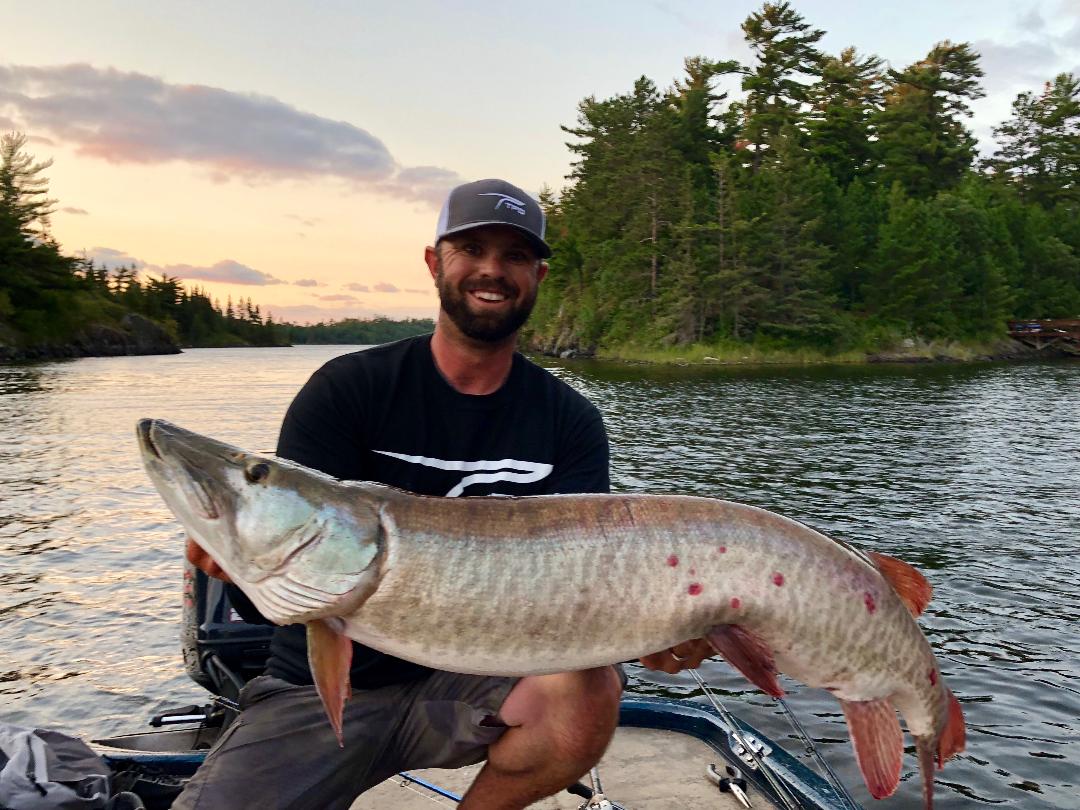Editor’s Note: This submission comes from TFO amabassador Will Dykstra, who is dialed in swimbaits. Enjoy.
When it comes to targeting large predator fish, few presentations match the subtlety of swimbaits. Technology has benefited this lure category as much as any on the market today. A big reason for the effectiveness of swimbaits is the ability to not only match the forage of large predators perfectly, but to be able to present these lures in a finesse manner that coaxes fish to strike in highly pressured waters.
The Setup
In order to fish swimbaits effectively, it is imperative that you have the proper setup, or equipment. One of the biggest challenges for anglers throwing these heavy lures all day is the toll it can take on the body. For this reason, TFO offers several options that can accommodate just about any swimbait and any angler out there. The GTS Swimbait Rod, for example, is specifically designed to allow the angler to cast larger and heavier baits with ease due to the fact that the rod has a softer tip. This feature results in a better lure launch and provides a higher sensitivity that equips the angler to execute a more precise finesse approach. This means even the most subtle take from a large predator can be detected, leading to greater success. The bottom portion of the rod, however, is built with strength and power in mind. The long stout butt of the rod allows for maximum power for the cast, retrieval, and equally important, the hook-set.
Heavy braided line is essential for large predator swimbaits. In order to handle big baits and large fish, the line weight should be in the 65-80-pound range. The braided line has proven to be more effective than a copolymer in this application because it maximizes sensitivity for lure control and hook-setting power. Often times, muskies, pike, or even a big mackinaw, will bite down so hard on these large soft plastic baits that the lure won’t even move on a hook set without stout gear. This is largely due to the gauntlet of teeth in these predators’ mouths as well as the soft nature of the bait. Therefore, having very little stretch in the line is imperative.
Finally, a reel with a larger line capacity is critical to accommodate the heavier braid. Typically, this will require a 300 series or bigger. The gear ratios can range anywhere from a 5:2:1 to 6:4:1, and will be adequate in any situation for these large fish.
The Presentation
When targeting these large predators, choosing a bait that matches color and profile of the forage is key. In many western waters the trout profile and color is king, while in the midwest and farther north into Canada the forage is much more diverse, ranging from suckers, ciscoes, and walleye, to even small pike.
Typically, swimbaits have “Rate of Fall” (ROF) options that include slow, moderate, or fast-sinking. Simply put, the ROF indicates the sink rates of the lure, allowing accurate target zones for desired depths to fish. The bait packaging normally lists the feet-per-second that the baits will sink. The depth that you run a swimbait is vital to fishing success; most of these targeted predators are ambush feeders. Therefore, fishing adjacent to weed lines, or even through the weeds, is extremely effective. The same goes for other forms of cover like rock ledges and stacked timber. Getting the bait at the right depth and in the right position is absolutely critical and can mean the difference between triggering a strike and missing your target altogether.
The finesse aspect of these swimbaits allows them to be fished extremely slow while still achieving a realistic profile and action that mimics exactly what the forage fish look like in their natural habitat. Fishing these baits slow with occasional pauses followed by very short bursts with the crank of the reel can generate some bone-jarring strikes, while the slow and steady retrieves tend to provoke a lighter, softer take.
Paying attention to the line and rod tip is crucial when it comes to this finesse approach, as often times these large fish will grab the bait and swim with it at the exact speed the bait is being retrieved. Once the take has occurred it is imperative to reel through the hook-set to maximize leverage followed with a second hook-set to drive the hooks home.
Regardless of the time of year, a swimbait can be a producer of some of the largest predators day in and day out. With the right tackle, the right presentation, and a little finesse, your chances of landing that fish of a lifetime can become a knee-knocking, arm-wrenching reality.







